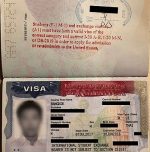A major shift ahead for Indian students seeking US F-1 visas

Global education trends continue to evolve, and a new proposal in the US Congress may bring a major change for Indian students.
The DIGNITY Act of 2025 seeks to end the long-standing “Intent to Leave” rule that shapes every F-1 visa interview.
This reform could make student visas effectively dual-intent and, therefore, reduce one of the biggest hurdles faced by Indian applicants.
Currently, consular officers operate under Section 214(b) of the US Immigration and Nationality Act.
The law presumes that every applicant may immigrate unless they prove strong reasons to return home.
As a result, students must show firm ties to India, such as property, stable jobs, or close family support.
Many families invest large sums, often amounting to several lakhs of rupees, to prepare for a US education, yet refusals still rise due to doubts about intent.
Recently, approval rates for Indian students dropped sharply. According to reports, many refusals occurred because officers felt students could not demonstrate a convincing plan to return after their studies.
Consequently, well-qualified applicants often faced rejection despite strong academic or financial profiles.
The proposed shift to a dual-intent framework aims to change this. Under the DIGNITY Act, students would not need to prove they will leave the US after graduation.
Moreover, consular officers could not deny a visa simply because an applicant may wish to work in the US later.
This change could reduce subjectivity during interviews and, therefore, create a fairer assessment process.
It may also lower refusal rates for strong Indian profiles that previously struggled under 214(b).
However, the plan remains uncertain. The bill must pass both houses of Congress and receive presidential approval.
Additionally, US authorities are considering replacing the current duration-of-status system with fixed-term admissions for F-1 students.
This shift could increase paperwork and compliance requirements, even if intent rules become more flexible.
For now, Indian aspirants should treat the proposal as a promising development rather than a guaranteed reform.
They must continue preparing under existing rules, while also staying updated on legislative progress.
If enacted, the change could reshape the entire F-1 interview experience and offer Indian students a clearer path to US education.
Image Credit: Iracha Tantiwongchaichan, CC BY-SA 4.0, via Wikimedia Commons
Image Reference: https://commons.wikimedia.org/wiki/File:Usa_j1_visa.jpg









